William Mougayar - The Business Blockchain: Promise, Practice, and Application of the Next Internet Technology
Here you can read online William Mougayar - The Business Blockchain: Promise, Practice, and Application of the Next Internet Technology full text of the book (entire story) in english for free. Download pdf and epub, get meaning, cover and reviews about this ebook. year: 2016, publisher: Wiley, genre: Romance novel. Description of the work, (preface) as well as reviews are available. Best literature library LitArk.com created for fans of good reading and offers a wide selection of genres:
Romance novel
Science fiction
Adventure
Detective
Science
History
Home and family
Prose
Art
Politics
Computer
Non-fiction
Religion
Business
Children
Humor
Choose a favorite category and find really read worthwhile books. Enjoy immersion in the world of imagination, feel the emotions of the characters or learn something new for yourself, make an fascinating discovery.
- Book:The Business Blockchain: Promise, Practice, and Application of the Next Internet Technology
- Author:
- Publisher:Wiley
- Genre:
- Year:2016
- Rating:4 / 5
- Favourites:Add to favourites
- Your mark:
The Business Blockchain: Promise, Practice, and Application of the Next Internet Technology: summary, description and annotation
We offer to read an annotation, description, summary or preface (depends on what the author of the book "The Business Blockchain: Promise, Practice, and Application of the Next Internet Technology" wrote himself). If you haven't found the necessary information about the book — write in the comments, we will try to find it.
The definitive pioneering blueprint covering the what, why and how of the blockchain.
Blockchains are new technology layers that rewire the Internet and threaten to side-step older legacy constructs and centrally served businesses. At its core, a blockchain injects trust into the network, cutting off some intermediaries from serving that function and creatively disrupting how they operate. Metaphorically, blockchains are the ultimate non-stop computers. Once launched, they never go down, and offer an incredible amount of resiliency, making them dependable and attractive for running a new generation of decentralized services and software applications.
The Business Blockchain charts new territory in advancing our understanding of the blockchain by unpacking its elements like no other before. William Mougayar anticipates a future that consists of thousands, if not millions of blockchains that will enable not only frictionless value exchange, but also a new flow of value, redefining roles, relationships, power and governance. In this book, Mougayar makes two other strategic assertions. First, the blockchain has polymorphic characteristics; its application will result in a multiplicity of effects. Second, we shouldnt ask ourselves what problems the blockchain solves, because that gives us a narrow view on its potential. Rather, we should imagine new opportunities, and tackle even more ambitious problems that cross organizational, regulatory and mental boundaries.
Drawing on 34 years of technology industry experience as an executive, analyst, consultant, entrepreneur, startup mentor, author, blogger, educator, thought leader and investor, William Mougayar describes a future that is influenced by fundamental shifts brought by blockchain technology as the catalyst for change. William Mougayar has been described as the most sophisticated blockchain business thinker. He is a blockchain industry insider whose work has already shaped and influenced the understanding of blockchain for people around the world, via his generous blogging and rigorous research insights. He is a direct participant in the crypto-technology market, working alongside startups, entrepreneurs, pioneers, leaders, innovators, creators, enterprise executives and practitioners; in addition to being an investor, advisor, and board member in some of the leading organizations in this space, such as the Ethereum Foundation, OpenBazaar and Coin Center.
Just as the Internet created new possibilities that we didnt foresee in its early years, the blockchain will give rise to new business models and ideas that may still be invisible. Following an engaging Foreword by Vitalik Buterin, this book is organized along these 7 chapters:
1. What is the Blockchain?
2. How Blockchain Trust Infiltrates
3. Obstacles, Challenges & Mental Blocks
4. Blockchain in Financial Services
5. Lighthouse Industries & New Intermediaries
6. Implementing Blockchain Technology
7. Decentralization as the Way Forward
The Business Blockchain is an invitation for technologists to better understand the business potential of the blockchain, and for business minded people to grasp the many facets of blockchain technology. This book teaches you how to think about the blockchain.
William Mougayar: author's other books
Who wrote The Business Blockchain: Promise, Practice, and Application of the Next Internet Technology? Find out the surname, the name of the author of the book and a list of all author's works by series.

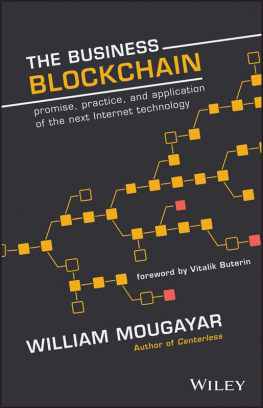


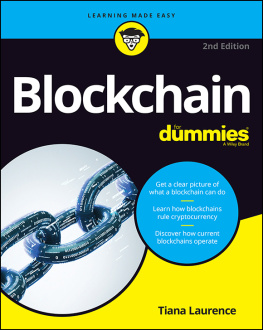
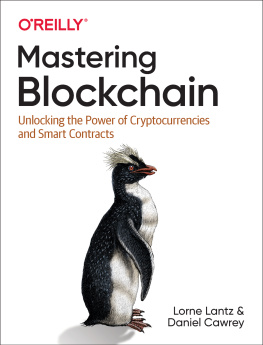

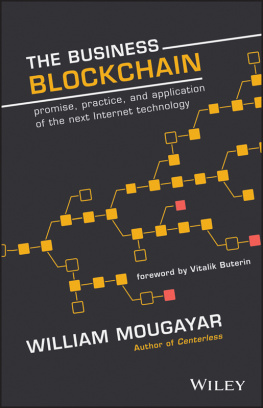

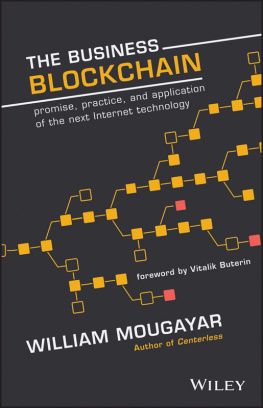
![Tiana Laurence [Tiana Laurence] - Blockchain For Dummies](/uploads/posts/book/119706/thumbs/tiana-laurence-tiana-laurence-blockchain-for.jpg)